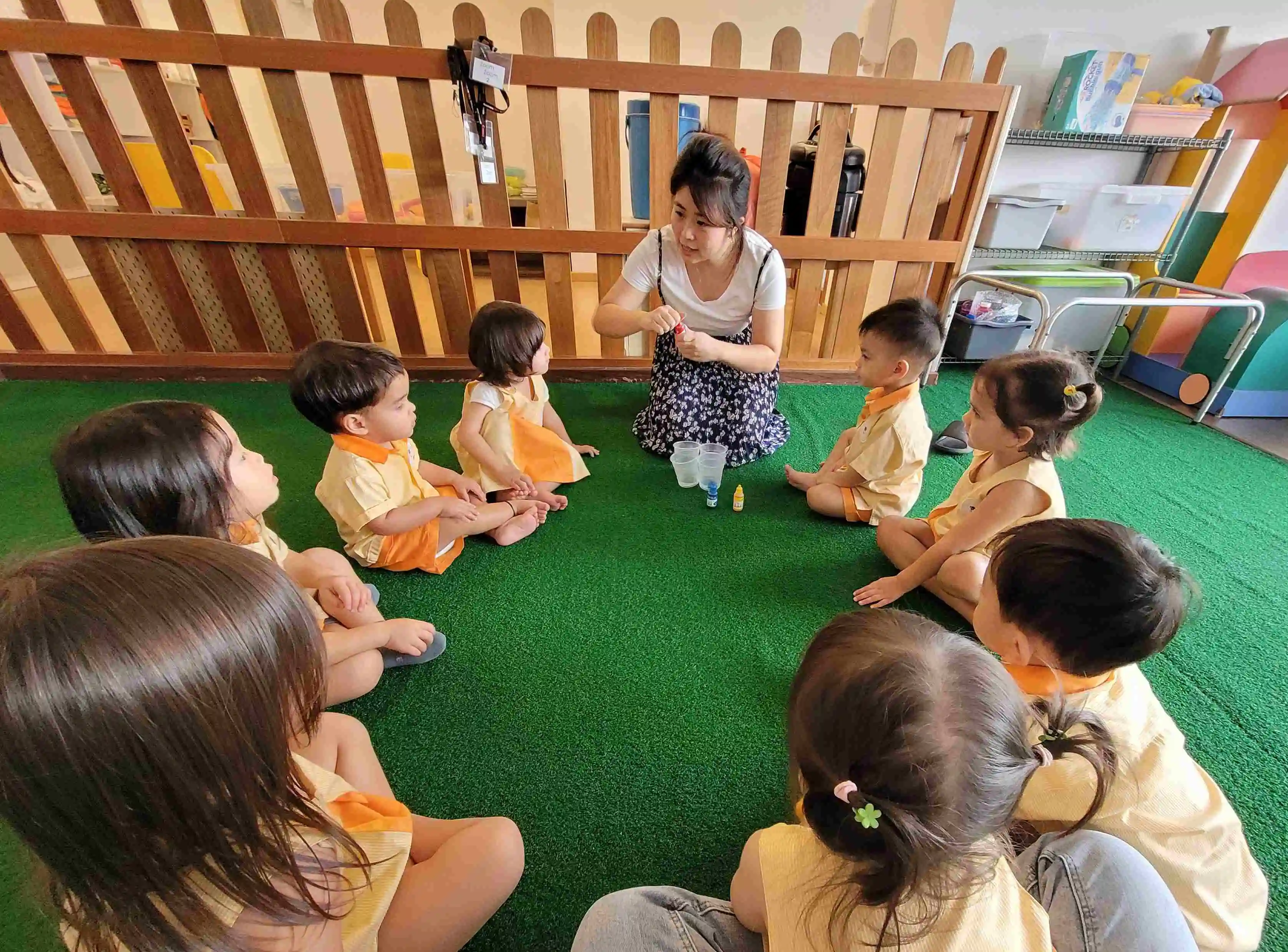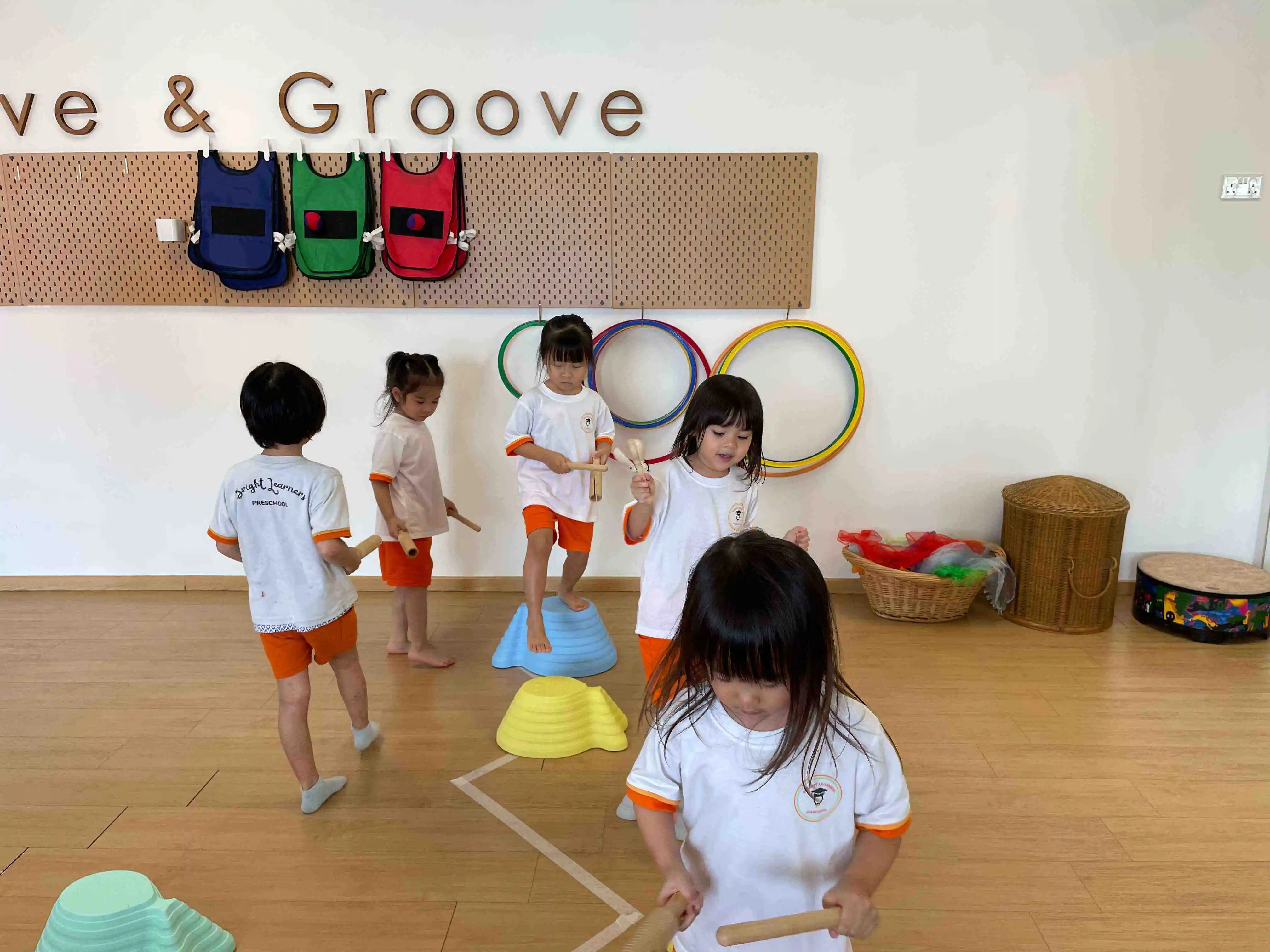The Reggio Emilia Approach: Why It’s the Best Preschool Curriculum for Your Child
- Bright Learners Admin

- Mar 5
- 6 min read
Introduction
Are you on the hunt for a preschool in East Coast Singapore that educates and inspires your child to think creatively and explore the world around them?
With so many early education options available, finding a programme that truly aligns with your child's unique needs and learning style can be challenging. Traditional classrooms often emphasise structure and routine, which, while important, may not fully nurture a child's natural curiosity and love for discovery. This is where the Reggio Emilia approach shines.
This approach to early childhood education was developed in the town of Reggio Emilia, Italy, and this innovative educational philosophy considers every child, individually and in their relations with the group, is a constructor of experiences to which they are capable of attributing sense and meaning. In a Reggio Emilia inspired setting, children are encouraged to ask questions, collaborate with peers, and express themselves through hands-on learning experiences. The learning environment acts as the third teacher, where creativity and critical thinking thrive, and every child's voice is valued.
If you've been searching for a Reggio Emilia inspired preschool, you're at the right place. In this article, we'll break down what makes the Reggio Emilia approach so special, how it benefits young learners, and how you can find a preschool that embraces this transformative method.
Let's dive in and discover why this approach changes our thoughts about early childhood education.
What is the Reggio Emilia Approach?

The Reggio Emilia approach is an innovative educational philosophy for early childhood education that originated in the town of Reggio Emilia, Italy. It emphasises child-led learning, creativity, and collaboration.
In a Reggio Emilia inspired setting, children are seen as capable learners who explore their interests through hands-on learning experiences and self-expression through the ‘100 languages’. This approach values the environment as the third teacher and focuses on fostering curiosity, critical thinking, and community.
For parents seeking a preschool that nurtures individuality and creativity, Reggio-inspired preschools offer a dynamic and engaging alternative to traditional early education.
What Is the Reggio Emilia Approach?
A Parent's Perspective on Why It Feels Different
As a parent, I remember walking into my first Reggio Emilia classroom and feeling an immediate shift. This space felt alive, unlike traditional preschools, where rows of tiny chairs and structured lesson plans dominate. The walls were adorned with children's artwork, the shelves filled with natural materials, and the air buzzed with the sound of kids deeply engaged in their learning. It wasn't just a classroom—it was a place where curiosity was celebrated, and learning felt like an adventure.
The Reggio Emilia approach isn't just another educational method; it's a mindset. It views children as capable, curious individuals who learn best through exploration, collaboration, and self-expression. Instead of following a rigid curriculum, teachers act as facilitators, helping children dive deeper into their interests and questions. It's an approach that respects the uniqueness of every child, and as a parent, that's something I found incredibly refreshing—and reassuring.
If you've ever wondered whether there's a better way to nurture your child's love for learning, the Reggio Emilia approach might be the answer you've been looking for. Let's explore what makes it so special.
What Are the Principles of the Reggio Emilia Approach? Breaking Down the Core Ideas
When I first learned about the Reggio Emilia approach, I was struck by how different it felt from traditional education. It wasn't just about teaching kids but about creating an environment where they could thrive. At its heart, this approach is built on key principles that guide everything from classroom design to daily interactions.
Here's a breakdown of what makes this approach so unique:
Emergent Curriculum
At the heart of the Reggio Emilia approach is the idea that the interests and curiosities of the children themselves should drive learning. Unlike traditional preschools, where the curriculum is fixed, the emergent curriculum in a Reggio Emilia classroom is fluid and dynamic. Teachers observe and listen to children’s responses, using their questions, thoughts and ideas as the foundation for learning experiences.
This approach, pioneered by Loris Malaguzzi, ensures that early childhood education in classrooms isn't just about memorisation but also about fostering a love for learning. In Reggio-inspired preschools, children are encouraged to explore topics deeply, whether it's building a city out of blocks, creating art inspired by nature, or investigating how plants grow.
This educational philosophy respects the individuality of each child, making early childhood education a collaborative and engaging experience. For parents seeking a preschool that values curiosity and creativity, the Reggio Emilia approach offers a refreshing alternative to conventional methods.
100 Languages of Children
One of the most beautiful aspects of the Reggio Emilia approach is its belief in the different ways children express themselves. This principle, often referred to as the hundred languages, recognises that children learn and express themselves in countless ways—through art, music, movement, storytelling, and more.
In a Reggio Emilia inspired setting, children are encouraged to use these diverse forms of communication to share their ideas and discoveries. The environment, often called the third teacher, is important in this learning process. With open-ended materials like clay, paint, natural objects, and building blocks, the classroom is designed to allow children to explore and represent their thoughts creatively. This approach not only deepens their understanding but also builds confidence as they see their ideas come to life. By valuing all forms of expression, the Reggio Emilia approach ensures that every child feels seen, heard, and capable in their unique way.
Collaboration
The Reggio Emilia approach strongly emphasises collaboration because it views learning as a shared experience among children, teachers, and families. In a Reggio Emilia classroom, children work together on in-depth learning experiences, using dialogue, negotiation, and teamwork to solve problems and explore ideas.
Teachers act as facilitators in the learning process and, as a result, create an environment where children are encouraged to listen to and build on each other's thoughts. This collaborative spirit extends beyond the classroom and can involve parents and the community in learning. By prioritising relationships and teamwork, the Reggio Emilia approach helps children develop social skills, empathy, and a sense of belonging, making learning a collective and enriching experience.
Pedagogical Documentation
At the core of the Reggio Emilia approach is pedagogical documentation. This is a practice that captures children’s actions, words, and learning processes by teachers or educators to better understand each child, reflect on their teaching methods, and meaningful learning experiences.
By documenting children’s work and interactions, educators can make their thinking and discoveries visible, and highlight not just the outcomes but the learning process itself. This documentation is shared with children and families, to encourage reflection, dialogue, and collaboration.
It can further the classroom into a space where learning is continuously explored, evaluated, and celebrated, so that every child’s journey is seen, valued, and built upon.
Bright Learners Preschool: Embracing the Reggio Emilia Inspired Classroom for Meaningful Early Years Learning Experiences
When choosing a preschool, every parent wants a place where their child will feel valued, inspired, and excited to learn. That's what Bright Learners Preschool offers by integrating the Reggio Emilia curriculum into daily practices. At Bright Learners, the focus isn't just on teaching—it's on creating an environment where children can explore, create, and grow in ways that feel natural and meaningful to them.
What Sets Bright Learners Preschool Apart?
At Bright Learners Preschool, the Reggio Emilia approach is more than just a buzzword—it's the foundation of everything they do. Here's how they bring this philosophy to life:
1. Child-Centered Learning: Every child is seen as a capable and curious individual. Teachers at Bright Learners act as facilitators, helping children explore their interests through hands-on learning and collaborative experiences.
2. The Classroom as the Third Teacher: Step into Bright Learners Preschool, and you'll notice how thoughtfully designed it is. Natural materials, open spaces, and plenty of light create an inviting environment for kids to be adventurous and creative.
3. Project-Based Exploration: Instead of sticking to a rigid curriculum, children at Bright Learners engage in a wide variety of learning content that stems from their own questions and curiosities. This approach fosters critical thinking and a love for learning.
4. Strong Relationships: Collaboration is key. Teachers, children, and even parents work together to create a supportive learning community where everyone's voice is heard.
5. Celebrating Expression: Whether through art, music, or storytelling, Bright Learners Preschool recognises that every child has a unique way of expressing themselves. The Reggio Emilia curriculum ensures that all forms of expression are valued and encouraged.
Why Choose Bright Learners Preschool?
If you're searching for a Reggio Emilia preschool near you, Bright Learners stands out as a place where your child's natural curiosity and creativity will be nurtured. It's not just about preparing children for primary school—it's about helping them develop a lifelong love for learning.
Parents who've experienced Bright Learners Preschool often share how transformative it feels to see their children thrive in an environment that respects their individuality and encourages them to ask questions, solve problems, and express themselves freely.
Final Thoughts
Choosing the right preschool is a big decision, and Bright Learners Preschool makes it easier by offering a Reggio Emilia curriculum that truly puts children first. If you're looking for a preschool that values creativity, collaboration, and curiosity, Bright Learners might just be the perfect fit for your children.
Ready to see it in action? You can reach out to us at Bright Learners Preschool and discover how the school can inspire your child's early learning journey today!












Comments